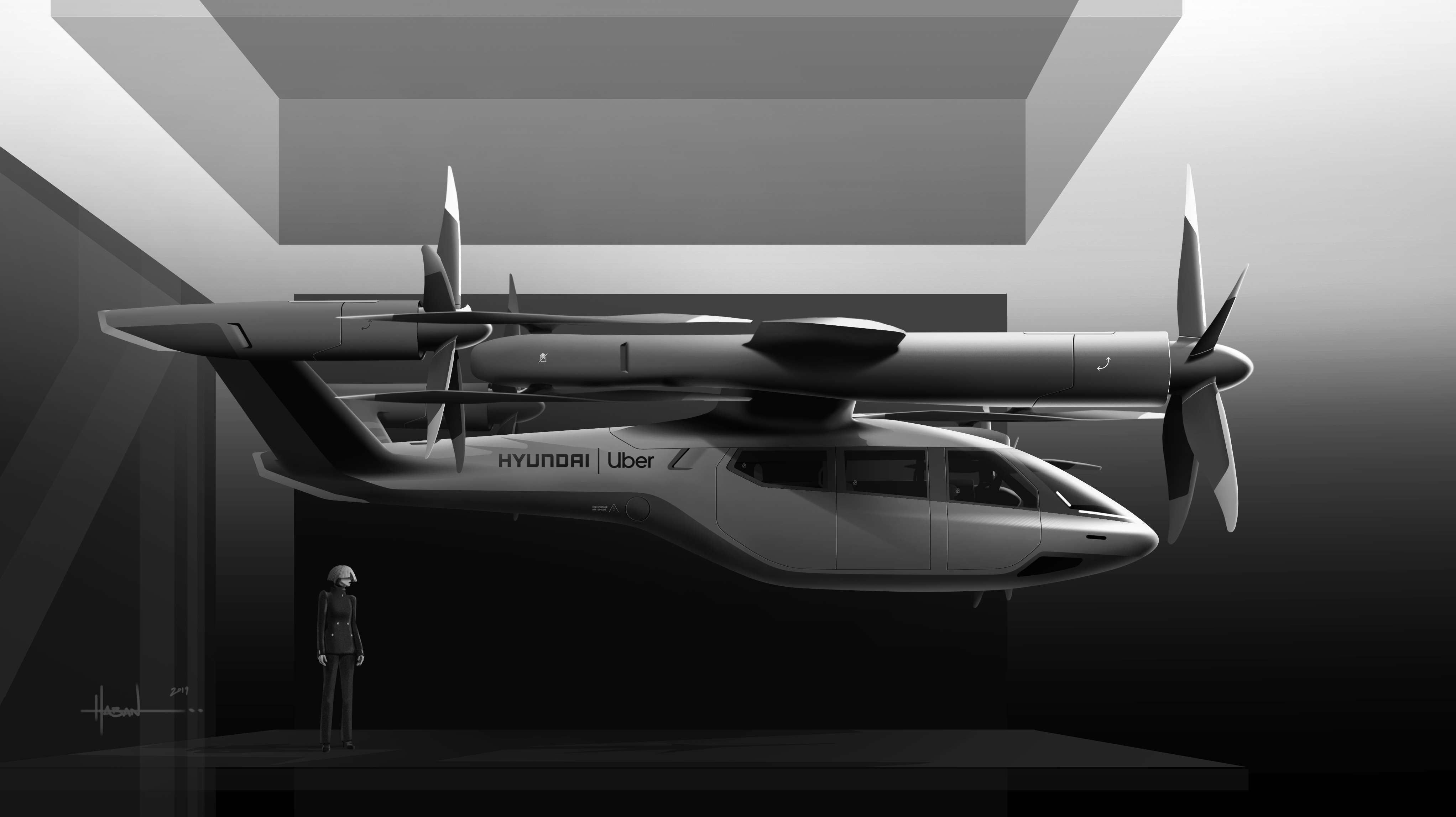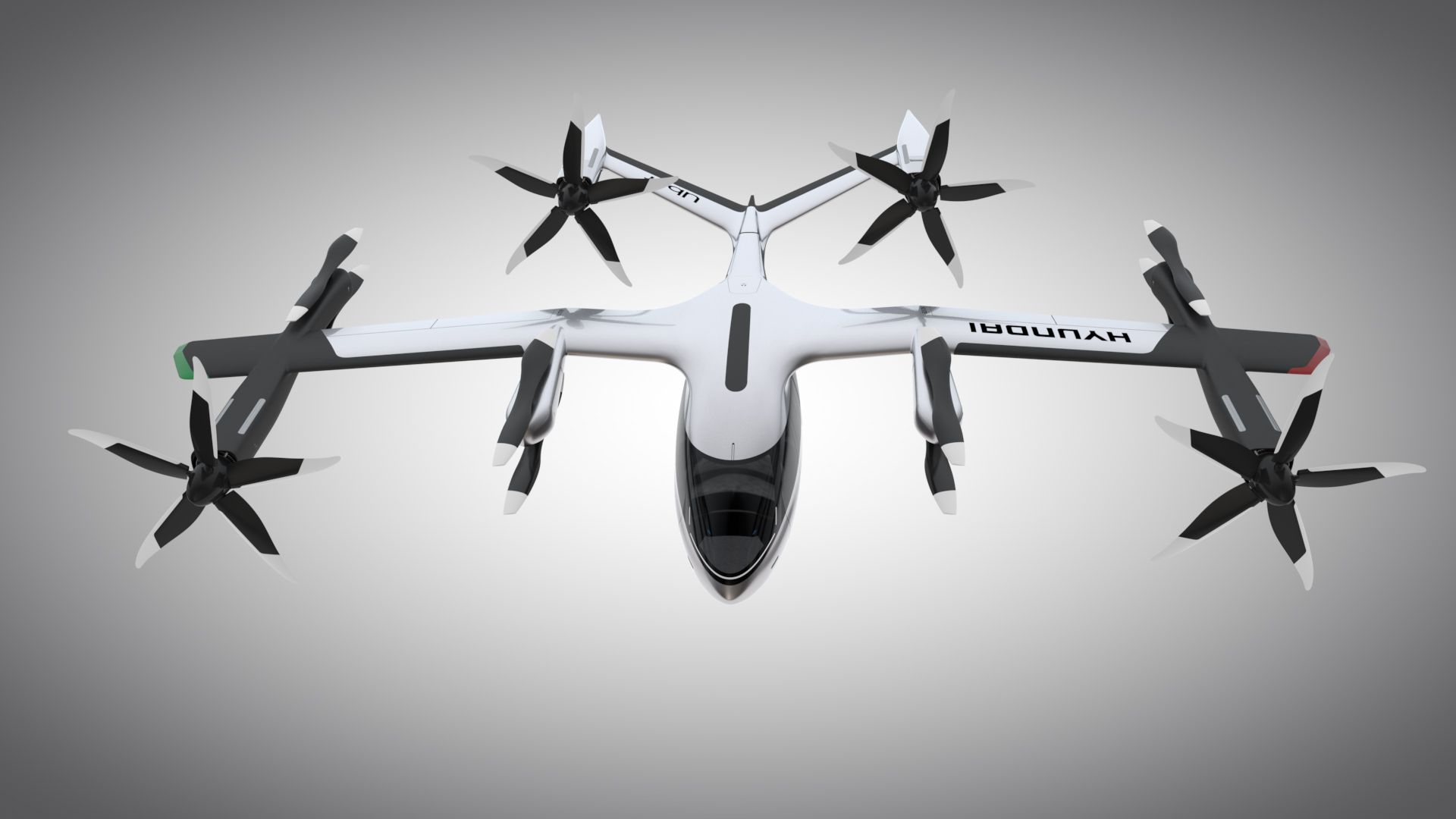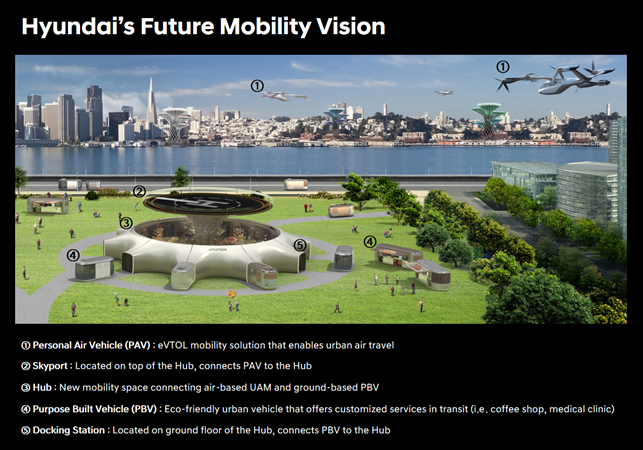These aspirations have taken another step closer with a partnership with Hyundai Motor Company to develop Uber Air Taxis for a future aerial ride share network. Together they unveiled a new full-scale aircraft concept at the Consumer Electronics Show (CES) in Las Vegas this week.
Hyundai is the first automotive company to join the Uber Elevate initiative, bringing automotive-scale manufacturing capability and a track record of mass-producing electric vehicles. The air vehicle concept was created in part through Uber's open design process, a NASA-inspired approach that jump-starts innovation by publicly releasing vehicle design concepts so any company can use them to innovate their air taxi models and engineering technologies.
In this partnership, Hyundai will produce and deploy the air vehicles, and Uber will provide airspace support services, connections to ground transportation, and customer interfaces through an aerial ride share network. Both parties are collaborating on infrastructure concepts to support take-off and landing for this new class of vehicles.

Hyundai's S-A1 model is designed for a cruising speed up to 180 miles/hr (290 km/hr), a cruising altitude of around 1,000-2,000 feet (300 - 600m) above ground, and to fly trips up to 60 mile (100 km). It will be 100% electric, utilising distributed electric propulsion and during peak hours will require about five to seven minutes for recharging.
The model is designed to take off vertically, transition to wing-borne lift in cruise, and then transition back to vertical flight to land. It will be piloted initially, but over time could become autonomous and has a cabin designed with four passenger seats, allowing riders to board / disembark easily and avoid the dreaded middle seat with enough space for a personal bag or backpack / rider.
Uber remains committed to commencing flight demonstrations in 2020 and make Elevate commercially available to riders in 2023. It has entered into partnerships with several highly experienced manufacturers including: Hyundai Motor Group, Aurora Flight Sciences (now a subsidiary of Boeing), Bell, Embraer, Joby Aviation, Pipistrel Aircraft, Karem Aircraft and Jaunt Air Mobility.
Uber's analysis projects that an electric vehicle will travel at a speed up to 200mph and that eventually, after several years in a market, an Uber Elevate ride will cost the same as an UberX ground trip of the same distance.

Alongside the Uber partnership, Hyundai Motor Company used CES, world's largest electronic show, to detail its innovative vision for urban mobility "to help vitalise human-centred future cities". To realise the vision, Hyundai Motors showcased three mobility solutions, comprising Urban Air Mobility (UAM), Purpose Built Vehicle (PBV) and Hub, a place for mobility transfer and community activities. Based on these mobility solutions, Hyundai aims to free future cities and people from constraints of time and space and allow them to create more value in their lives.
"UAM connects the sky and the ground, while PBV links people to people on the road. These two smart mobility solutions connect at the Hub, which will be installed across future cities to form a mobility ecosystem," it explains. The vision is also in line with the company's mid-term innovation plan 'Strategy 2025' to shift to its business structures based on two pillars - 'Smart Mobility Device' and 'Smart Mobility Service'.
